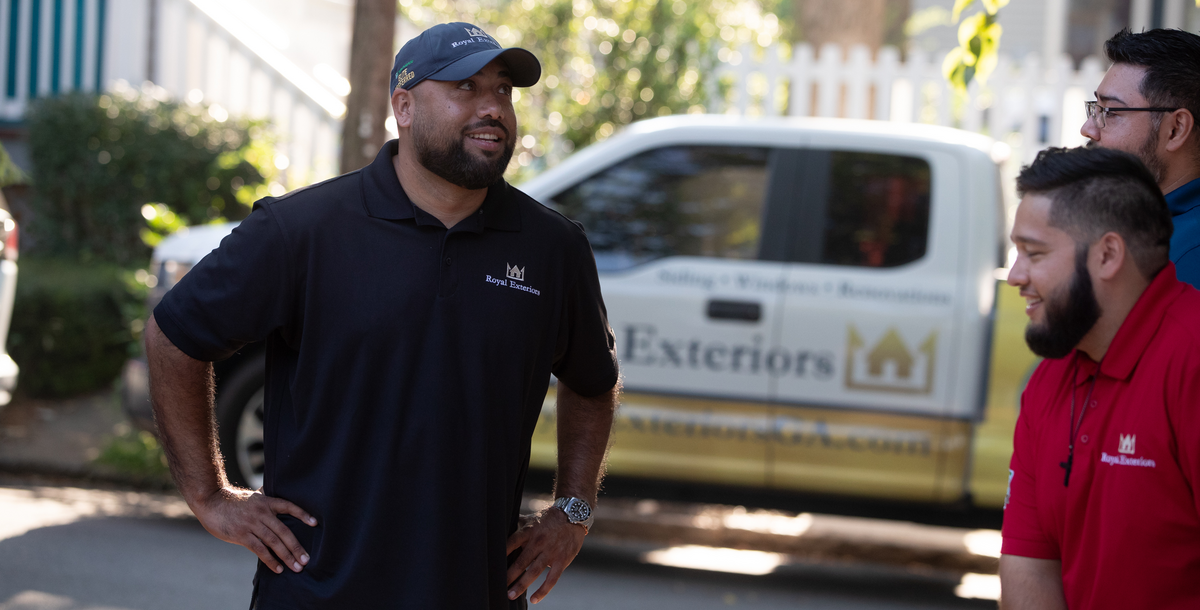When most contractors think about branding, they assume it refers to their website, logo, colors, tagline, and so on. However, branding is much more than that: it's the sum of your clients’ experiences with you and your company.
Sure, a great website and logo are important, but nothing shapes public opinion like reviews and testimonials that share specific sales and service interactions. In fact, 92% of people say they trust recommendations from family and friends over anything else. What’s more, displaying reviews can increase lead conversions by as much as 270%.
If you’re not encouraging happy clients to share their experiences, you’re missing out on easy money. The good news is there are tried and tested ways to harness all your clients' good feelings about your company to generate positive word of mouth and more referrals.
What is word-of-mouth marketing?
Think of word-of-mouth marketing like cultivating your very own brand ambassadors who sing your company’s praises. At its best, nurturing positive word of mouth creates a cascading effect that generates qualified, high-quality leads that are easier to convert. They’ll also come into the deal with a level of trust and good faith that gets the project off on the right foot.
We’d all like more of that, so let’s take a closer look at some ways to consistently inspire fantastic reviews and testimonials.
How can contractors use word of mouth to build their business?
While there’s no one-size-fits-all strategy, there are proven steps your company can take, starting today, that will improve your word-of-mouth advertising efforts.
Create exceptional client experiences
The most important thing you can do to encourage glowing client reviews and testimonials is deceptively simple: offer knock-your-socks-off experiences that clients will want to share with anyone who’ll listen. Happy clients are loyal (i.e. they're likely to become repeat customers) and vocal (i.e. they're likely to generate referrals).
Some things you can do right away to create these exceptional customer experiences include:
- Analyzing existing customer reviews to discover why past customers have enjoyed working with your company (or not).
- Developing procedures that build great client relationships and address areas that need improvement.
- Set clear expectations from the start and keep your customer informed of project progress. Communication is critical to establishing and maintaining clients' trust.
- Using tools for accurate estimating to prevent customer pain points like project overruns, labor inefficiencies, and late completion dates.
- Differentiate--in other words, create an experience your competitors aren't offering by, for example, exceeding expectations, leveraging project visualization capabilities, or increasing project cost transparency.
Make a plan
Without a plan for how you will generate good word of mouth, you're unlikely to take proactive action. That's why it's important to prepare and communicate a plan for collecting customer reviews and referrals.
Determine the who, what, when, and how in your plan — who in your organization will outreach to the customer, and at what point during or after the job? Will it be done by phone, email, text, or a combination of the three? Nail those details down and make them part of your procedures. It's worth noting that the best time to start talking about referrals is during your sales presentation - this gives the homeowner time to think about who would be a good referral and possibly begin spreading good feedback to their networks before the job is even completed.
You may also want to think about creating an incentive program for collecting reviews. Offer a coffee card or a car wash — a huge expense isn’t required. A word of caution: this shouldn’t be a pay-to-play situation. In other words, don’t pay for positive reviews. The goal is to offer a small reward to happy clients needing an extra nudge to act.
Ask for reviews and testimonials
When it comes to reviews and referrals, sometimes all you have to do is ask. Treat them as the important pieces of marketing they are. Some top tips for improving the art of the ask are:
- Start early. Set the stage for your review and referral request at one of the very first client interactions - the sales presentation - then follow through with reminders as regular touchpoints throughout the project. Doing this early at project outset normalizes the referral and review discussion.
- Act quickly! Memories fade as time goes on, so strike while the iron is hot and the client's positive experience is fresh in their mind.
- Communicate how important reviews and testimonials are to your business. More importantly, share HOW your team uses them to continually improve your service to future clients (people like to learn how their experiences will be used to help others).
- Make it easy. Give clients the opportunity to leave a review on multiple channels, including your firm’s website, Google, social media accounts, and lead-generating sites like HomeAdvisor, Houzz, and Angi.
- Create a process. By implementing a communications plan to collect reviews, testimonials, and referrals, you will make collecting them a fixed part of your team's procedure for executing any job.
Be active on social media
Now, for the fun part: discover clients who are already sharing awesome things about your company. Social media’s a great place to do this and can be a gold mine of user-generated content (posts, videos, photos, etc.).
Show and Tell
Nurture your social media communities to build an environment that encourages positive reviews, comments, and shares. Create or share customer posts; like a progress video or a before-and-after image. If their content includes glowing review material, ask for permission to include it everywhere your prospects go to learn about your firm: your company website, social media posts, brochures, and handouts. Remember, your level of engagement ties into the value you create with your followers (and potential referrals).
Set your social media response times
Social media moves fast, so the quicker the response the better. Respond to every question and review on your social media platforms within a set timeframe. It doesn’t have to be within minutes, but it should be within 24 hours to show your audience you’re paying attention.
How to respond to negative word-of-mouth advertising
Bad reviews happen to the best of us. It is impossible to get things perfect every time, and there will come a time when a customer will leave a bad review no matter what you do and how hard you try to resolve their issues.
Whatever the case may be, when someone’s left your company a poor review, there are tried-and-tested strategies for minimizing the damage.
Respond to all reviews with a sincere thank-you. Avoid a 'canned' response: show the client your appreciation in your own words to reinforce that there’s a team of real people behind your company name.
When it comes to managing negative reviews, approach them with a growth mindset. Shake off any feelings of frustration and defensiveness. Instead, ask yourself, “What can we as a team learn from this?” and, "How can we make this right for the homeowner?"
Be professional and polite in your response. Remember, potential clients read reviews to learn how you respond to challenges and criticism. If you and the client connect offline and resolve their issue, encourage them to leave a follow-up review that shares how your company made things right.
Put it in practice
Word-of-mouth marketing is the best construction advertising that money can’t buy. Pick a few things to focus on today to encourage stellar reviews and testimonials, and if you’re interested in learning how HOVER can help you create excellent customer experiences and happier clients, sign up for a free demo today.

-1.jpg)

